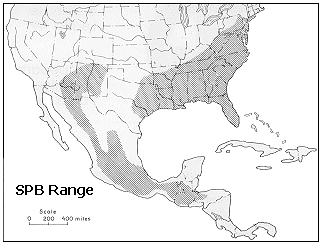 Impact
Impact
History
Research has indicated that an SPB outbreak occurred in southern NJ in 1939. There has not been another known outbreak in the Garden State until fall of 2001.
It is theorized that the late 1990's drought, interstate commerce and above average temperatures occurring in the Mid-Atlantic region have contributed to the SPB migrating northward to New Jersey. The forest environment under stress increased the susceptibility to SPB attack. After establishing a presence in the Garden State, the beetles, attracted to pheromones of other beetles and the scent of trees in stress, fly to infest new trees.
Preferred Hosts
The SPB's naturally ranges from Pennsylvania to Florida. The SPB attacks all species of pines, but prefers pitch, shortleaf, pond, and loblolly, which all occur in southern NJ. Initial SPB damage appears as yellow progressing to red and eventually brown within 1 to 2 months. Infested pine trees die within 3-4 months of initial attack.
Fire Danger
Needles falling off the branches land on understory vegetation creating a fuel ladder effect, which facilitates wildfires reaching the tree crowns. Trees that may still have dry dead needles on the branches could quickly erupt and wildfire could grow to conflagration proportions.


